How to Make a Cornish Pasty I
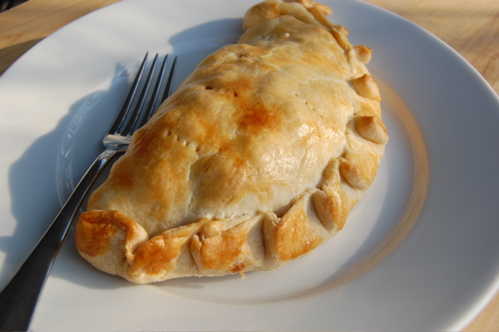
…side-crimped, glazed, with sliced potatoes and pork, that is. Top-crimped steak pasties coming soon. So then, let’s start with the dough, which is a very elementary proposition, even for those who fear pie crust. Begin by whisking your flour and salt together. Add your fat…
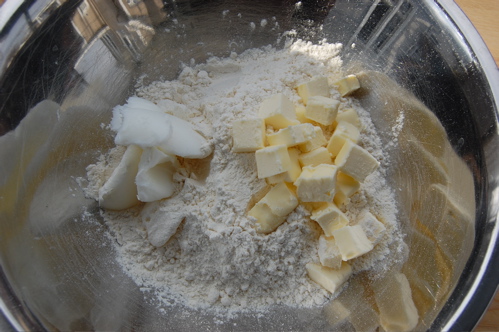
…and work it in by hand until you get a corn meal-like consistency.
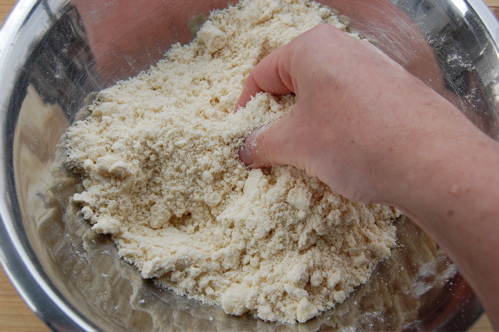
Add about half your water…
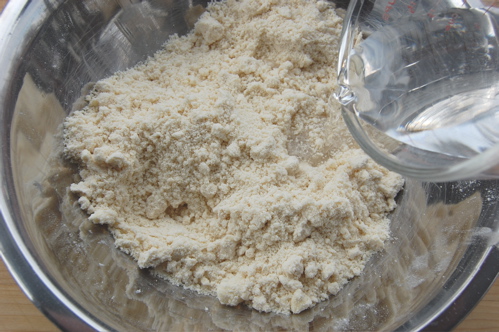
…work it in gently to moisten the mixture…
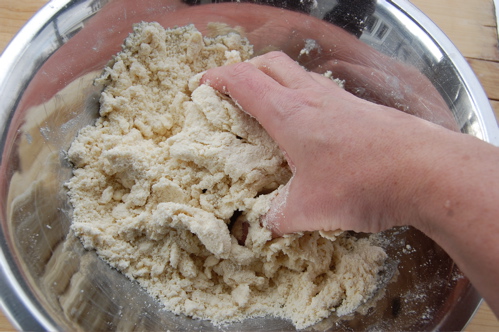
…add the rest of the water…
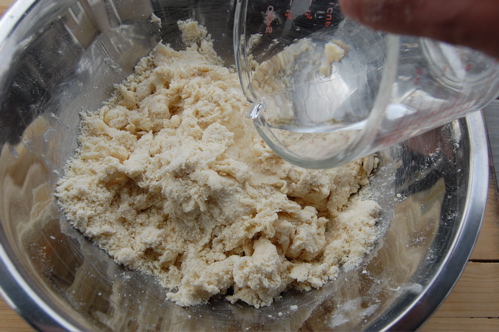
…and lightly knead it into a dough. Don’t work the dough much if you can help it, since you don’t want to develop stretchy gluten, and have the crust shrink and crack in the oven.
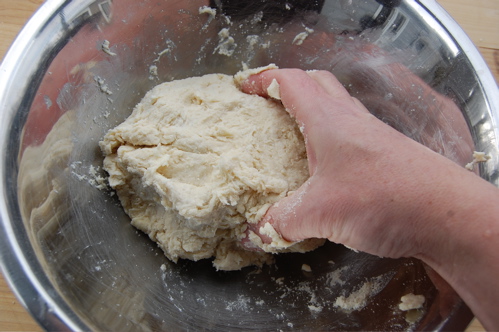
Now then, produce your ingredients, all prepped and ready. I have here pork, potato, turnips, onion, salt & pepper. Notice the dramatic lighting (my assistant and I thought something artistic might be a nice change of pace).
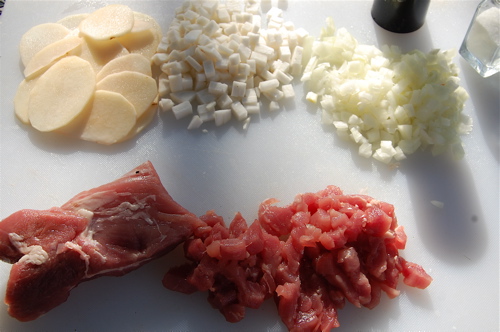
Place your dramatic, 5.5-ounce ball of dough on the floured work surface…
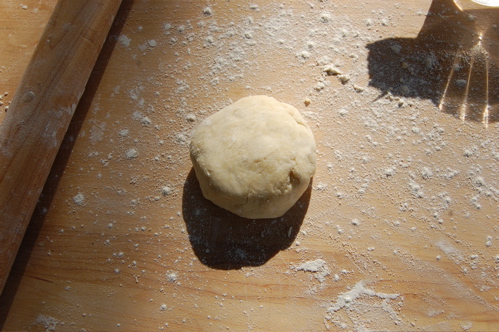
…and roll, turning the dough disk 90 degrees every pass or two to keep it in a rough circle.

See how nice and easy this dough is to work with? Stop when your disk is about ten inches across.
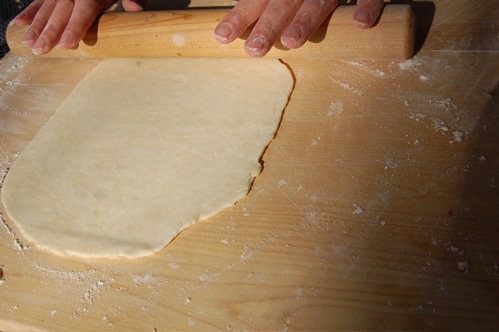
Now for the assembly. Drape the half of the dough circle that’s closest to you over your rolling pin. This will save space, keep the dough from sticking and give you a support, up against which you can make your ingredient mound. Lay down some sliced potatoes…
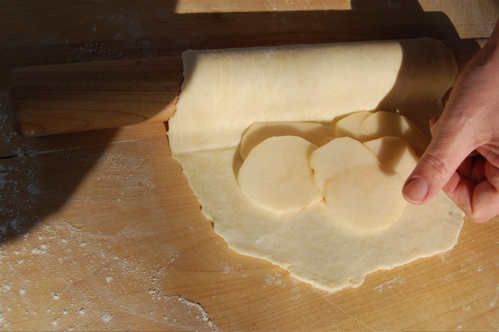
…and salt and pepper them. Here it’s important to point out that good pasty making requires every new layer of ingredients to be individually seasoned. Could you season them before you stack them? Well, yes, but that’s just not how I was taught.
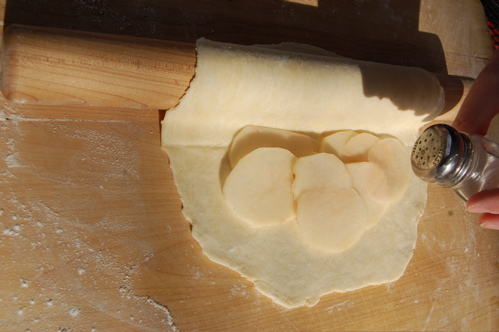
Keep stacking and salting…

…until you’ve got a good sized pile.
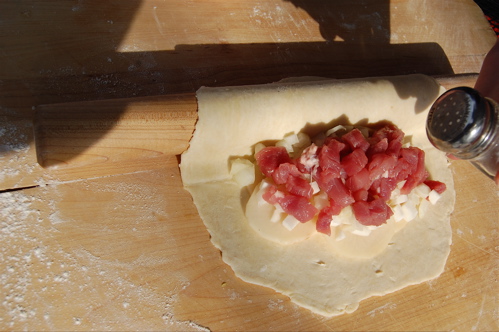
Now then, moisten the bottom edge of the dough disk with water, flip the top over (stretching it some if need be) and press the edges together.
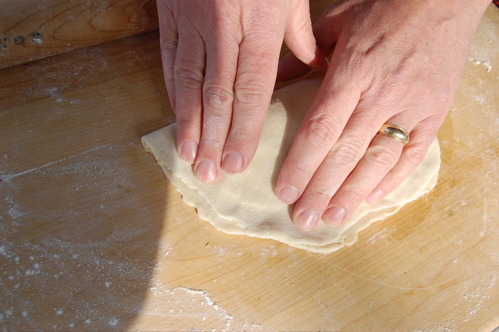
Now for the crimp. This is really quite easy. You simply want to gather two points of dough rim together to make a simple, z-shaped gusset. Then pinch it shut against the pasty.
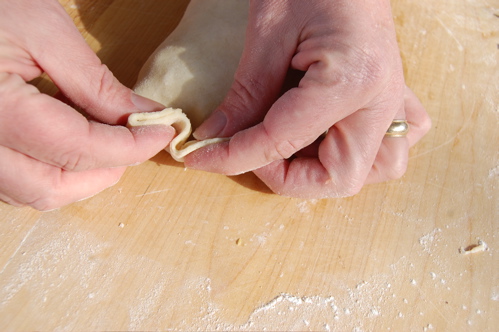
Gather a little more and pinch…gather a little more and pinch, working your way around until the whole thing is crimped.
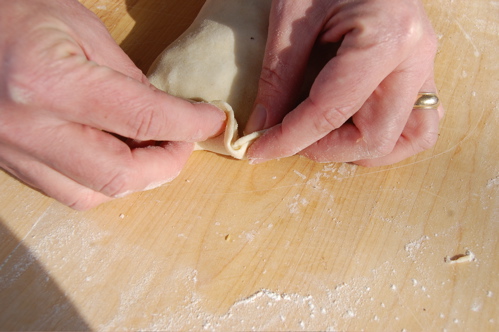
Like so:

See? No big deal. You can even skip the crimp if you want, though I might call you a sissy. Paint this with a wash of 1 raw egg mixed with about 1 tablespoon of milk. Poke a few steam holes on the top and bake in a 400 oven for 20 minutes. Then lower the heat to 350 and bake another 20 minutes to half an hour, until the pasties are nice and golden. Eat hot or cold.
Great directions! Can you demonstrate how to do a braided edge? I love those.
A braided pasty? I’m sure I’ve seen one, but I can’t say I can recall what they look like. Can you point me to a picture? I can probably figure it out!
Alright! This right here sir.
http://www.properpasty.co.uk/traditional-cornish-pasty/
http://www.pastyman.com/cornish-pasties.php
Perhaps I should’ve said twisted, but oh well.
Ah, OK, I see what you mean. I know that crimp, but I’m not very good at it. It’s very similar to the gusset crimp that’s on the web site now. The difference is that instead of gathering up the dough along the rim into a fold, you’re rolling it inward between your thumb and forefinger. Then you pinch, move down a little, roll, pinch and do it again. I’ll try to demonstrate it the next time I make pasties…though I’m honestly not sure when that will be. In the meantime, you might try looking around at YouTube videos or sites that show you how to make empanadas, since empanada makers frequently employ that crimp as well. Best of luck! Send me photos! – Joe